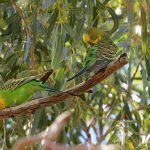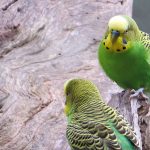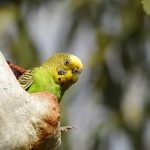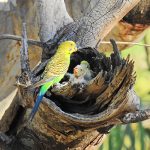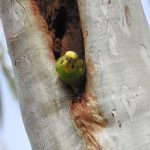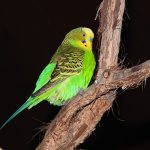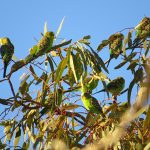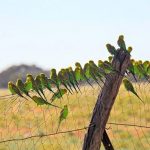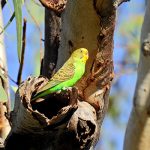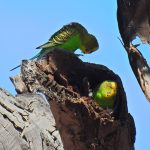BUDGERIGAR
Budgerigars, also known as budgies, are small parrots that are native to Australia. They are primarily found in the drier regions of the continent, including scrublands, grasslands, and open woodlands.
They are highly social birds and usually form large flocks in the wild. These flocks can consist of hundreds or even thousands of individuals. Living in a flock provides them with safety, better foraging opportunities, and opportunities for social interactions.
Budgerigars primarily feed on a variety of grass seeds, including those from native grasses, herbs, and shrubs. They have a specialized beak that allows them to efficiently remove the husks of the seeds. They are highly dependent on water sources and need to drink water regularly, and will often fly long distances in search of water, especially during dry periods.
During the breeding season, male budgerigars perform elaborate courtship displays to attract females. These displays involve bobbing their heads, puffing up their feathers, and chirping to demonstrate their fitness and attract a mate. They typically breed in tree hollows or crevices in cliffs. They do not build nests but instead lay their eggs on a layer of decayed wood dust or other material found in the nesting site. The female budgie takes the primary responsibility for incubating the eggs.
Budgerigars are known for their nomadic behavior, especially in response to changes in food and water availability. They can travel long distances in search of better conditions, and large flocks can form in areas with abundant resources. They are highly vocal birds, and use a wide range of chirps, calls, and whistles to communicate with other members of their flock, establish territory, and express their emotions.
In the wild, the average lifespan of a budgerigar is around 5 to 8 years.
In their natural habitat, budgerigars face various threats, including predation by raptors, snakes, and other animals. They are also vulnerable to habitat loss due to land development and competition for resources with introduced species.

